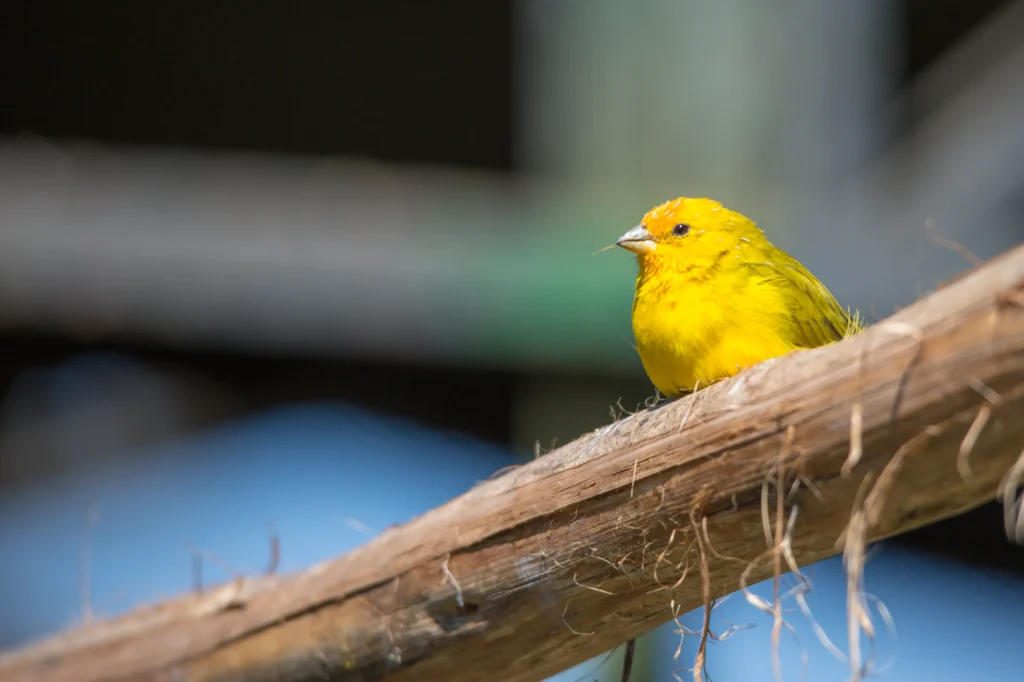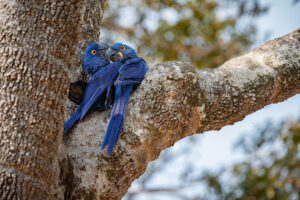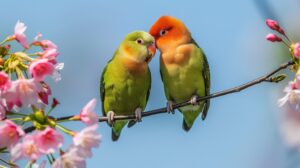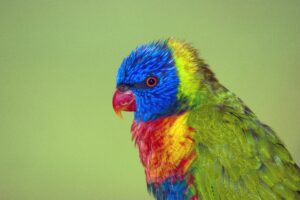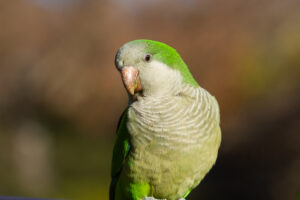The melodious trill of canary bird singing has captivated human ears for centuries. These small, vibrant birds possess vocal abilities that far surpass what their diminutive size might suggest. From the competitive world of canary singing contests to the intricate biology behind their songs, there’s much more to the canary bird song than meets the ear.
Whether you’re a long-time canary enthusiast or considering bringing one of these melodious companions into your home, understanding the fascinating science and culture behind their vocalizations can deepen your appreciation for these remarkable songsters. What causes a canary to burst into song? How do they learn their melodious tunes? And what secrets lie behind creating the best singing canary bird?
In this comprehensive guide, we’ll explore seven shocking facts about canary bird singing that will transform your understanding of these feathered virtuosos. From the biological differences between males and females to the surprising history of competitive singing, these insights will help you appreciate—and potentially improve—your canary’s vocal performances.
1. Canaries Are Among the Few Birds That Learn Their Songs
Unlike many birds whose songs are purely instinctual, canaries belong to the select group of avian species known as “true songbirds” or oscines. According to the Cornell Lab of Ornithology, these birds actually learn their songs rather than being born with their entire vocal repertoire hardwired.
The Learning Process
The process of song learning in canaries involves several fascinating stages:
- Sensory Phase: Young canaries listen to and memorize adult songs
- Sensorimotor Phase: They begin practicing, creating “subsong” (similar to human babbling)
- Crystallization: The song gradually develops into a consistent adult pattern
Dr. Timothy Gardner, neuroscientist at the University of Delaware, explains in his research published in Science: “Canaries have the rare ability to learn and modify their vocalizations throughout their lives, making them excellent models for studying the neural mechanisms of vocal learning, which has parallels with human speech acquisition.”
This learning ability means that how to make canary sing better often involves exposure to excellent singers during their formative period. Many breeders play recordings of champion canaries to their young birds to influence their developing repertoire.
Annual Song “Reset”
Perhaps most shocking is that male canaries undergo a nearly complete song reset each year following the breeding season. According to the Journal of Neuroscience, the brain regions controlling song in canaries actually shrink during the non-breeding season and regrow the following spring, allowing for song relearning and innovation.
This annual renewal process is why canary singing training can be effective even with older birds and explains the seasonal variation many owners notice in their birds‘ performances.
2. Male vs. Female Canary Singing: It’s Not What You Think
One of the most common pieces of canary wisdom is that only males sing. However, the reality of male vs female canary singing is more nuanced than this simplified rule suggests.
Female Vocals
While males are indeed the primary singers with more complex songs, research published in the Avian Biology Research journal has documented that:
- Females can and do produce songs, though typically simpler and less frequent
- Some female canaries can develop substantial singing ability under certain hormonal conditions
- The singing distinction is more pronounced in some canary varieties than others
Dr. Laura Wilkins, avian behavioral specialist, explains: “Female canaries possess the physical structures needed for singing. While testosterone plays a key role in male song development, females exposed to testosterone can develop singing capabilities similar to males, demonstrating that the neural pathways for song production exist in both sexes.”
Hormonal Influence
The primary reason behind the male vs female canary singing difference is hormonal. Males produce testosterone, which stimulates:
- Development of the syrinx (the bird’s vocal organ)
- Growth in song control nuclei in the brain
- Motivation to sing for territorial and mating purposes
This is why why do canaries sing extensively during breeding season—male hormones surge, stimulating singing behavior. If you’re wondering why is my canary not singing, it’s worth considering whether you have a female bird or whether your male might have hormonal imbalances.
According to the Avian Conservation and Ecology journal, some environmental toxins can disrupt hormone production in canaries, potentially affecting singing behavior.
3. Canary Vocal Range Exceeds Human Hearing Capabilities
The canary bird sounds we enjoy represent only a portion of their actual vocal range. Research from the Journal of Experimental Biology has revealed that canary vocalizations extend into ultrasonic frequencies.
Beyond Human Perception
Studies examining canary singing frequency have discovered:
- Canaries can produce sounds up to 20 kHz (human hearing typically tops out around 16-18 kHz)
- Their songs contain complex harmonics that extend beyond our hearing range
- Some communication between canaries occurs in these ultrasonic frequencies
This means that much of canary vocal communication happens outside human perception—when we enjoy canary bird singing, we’re only experiencing a portion of their full vocal performance.
Song Complexity
Using specialized recording equipment, researchers at the Max Planck Institute for Ornithology have documented that the average canary song contains:
- 25-30 distinct syllable types
- Syllable repetition rates up to 30 per second
- Precise timing patterns between notes
- Complex phrase structures
Dr. Henrik Brumm, who studies bird vocalization, notes: “The vocal control required for canary singing is extraordinary. They manipulate their vocal tract with precision that would challenge professional human singers, all while breathing in a completely different way than mammals.”
4. Breeding Has Created Specialized Singing Varieties

Not all canaries are created equal when it comes to song. Centuries of selective breeding have created distinct varieties optimized for different singing qualities—making the quest to find the best singing canary bird more complex than simply choosing any canary.
Song Canary Varieties
According to the American Singer Canary Association, specialized song varieties include:
- Roller Canaries: Known for soft, rolling notes with distinctive “hollow tours” and “water sounds”
- Waterslager Canaries: Characterized by water-like bubbling and bell notes
- American Singers: Bred for a balanced song combining elements of both Rollers and Border Canaries
- Spanish Timbrado: Featuring louder, more varied songs with distinctive metallic tones
- Russian Singer Canaries: Known for unique low-pitched “schtschekanie” sounds
These varieties have been developed through careful selection, with breeders pairing birds exhibiting desired vocal characteristics over many generations.
Song Inheritance
The National Canary Society indicates that approximately 30-40% of a canary’s song quality comes from genetic factors, while the remainder is influenced by early exposure and training.
This explains why canary bird singing training is so important, even with birds from excellent genetic stock. Without proper exposure to quality songs during their formative periods, even the best-bred canaries may develop poor singing habits.
5. Canary Singing Competitions Have a Fascinating History
The world of canary singing competition has a rich history dating back centuries, with traditions that might surprise even experienced bird enthusiasts.
The Competition Culture
According to historical records documented by the World Canary Federation:
- Organized singing competitions began in the 1700s in Belgium and Germany
- Birds compete in darkened environments, often in special small cages called “song boxes”
- Judges evaluate songs without seeing the birds to prevent visual bias
- Scoring systems vary by competition type but typically assess tone, pitch, duration, and variety
- Champion birds can command extraordinary prices for breeding
Modern canary singing competition events are held worldwide, with major competitions in Europe, North and South America, and Asia.
Judging Criteria
The judging criteria for these competitions reflect the attributes considered desirable in canary bird singing:
- Tours: Specific sequences of notes (each variety has characteristic tours)
- Depth: Richness and resonance of tone
- Roll Length: Duration of continuous rolling sounds
- Variety: Range of different elements in the song
- Transitions: Smoothness between different song elements
- Faults: Certain harsh notes or interrupted patterns can result in point deductions
Dr. Fernando Rodriguez, president of the International Canary Association, explains: “The formality and precision of canary song judging rivals wine tasting or classical music criticism. Judges train for years to distinguish subtle variations in tone quality and song structure that casual listeners might never detect.”
6. Diet and Environment Dramatically Affect Singing Quality
While genetics and training play crucial roles in developing a best singing canary bird, diet and environment have immediate and dramatic effects on singing performance.
Nutritional Impacts
Research published in the Journal of Avian Medicine and Surgery indicates that specific nutrients particularly affect singing:
- Protein Quality: Affects the development and maintenance of the syrinx
- Vitamin E: Supports muscular health including vocal muscles
- Vitamin A: Essential for mucous membrane health in the vocal tract
- Omega-3 Fatty Acids: Support neurological function for song learning and execution
The best food for singing canary typically includes:
- High-quality canary seed mix (including rape, hemp, and flax seeds)
- Fresh dark leafy greens like kale, spinach, and dandelion
- Egg food during breeding and molting seasons
- Limited quantities of mineral-rich foods like cuttlebone and mineral blocks
According to avian nutritionist Dr. Susan Orosz, “Many owners don’t realize that nutrition affects not just the bird’s health but also directly impacts their singing ability. A canary on a poor diet may have the genetic capability for excellent singing but physically cannot perform to their potential.”
Environmental Factors
The Journal of Comparative Psychology has published studies showing that environmental conditions significantly impact canary bird singing:
- Light Cycles: 14-16 hours of light stimulates singing behavior
- Temperature: 65-75°F (18-24°C) is optimal for singing performance
- Humidity: Moderate humidity (40-60%) supports vocal health
- Background Noise: Quiet environments encourage more complex singing
- Social Environment: Presence or absence of other canaries affects singing motivation
This explains why many owners notice that their canaries sing more in spring and early summer—the increasing daylight naturally stimulates hormonal changes that promote singing.
7. Canaries Use Different Brain Pathways for Different Songs
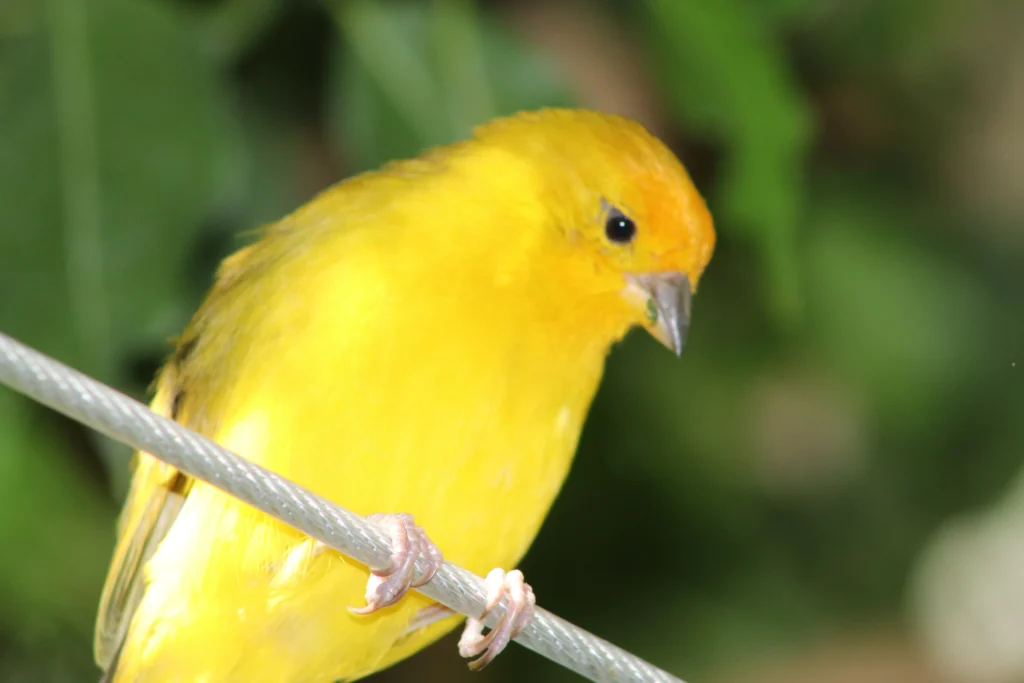
Perhaps the most scientifically fascinating aspect of canary bird singing involves neuroscience. Research from the Proceedings of the National Academy of Sciences has revealed that canaries use different neural pathways for different types of vocalizations.
Neural Song Control
Neurological studies have identified distinct brain circuits for:
- Learned Songs: Complex, stereotyped songs use the “song system” pathway
- Calls and Chirps: Simpler vocalizations use more primitive brain pathways
- Plastic Songs: Songs under development use both pathways with different connectivity
This means that canary bird chirping and full canary bird song actually originate from different parts of the brain, despite coming from the same syrinx.
Seasonal Brain Changes
According to research from Neuroscience journal, the canary’s brain physically changes with the seasons:
- Song control nuclei grow up to 70% larger during breeding season
- New neurons are added to these brain regions each spring
- Neural connections are pruned and reformed annually
- These changes correspond with song complexity changes
Dr. Eliot Brenowitz, neuroethologist at the University of Washington, notes: “Canaries exhibit some of the most dramatic seasonal neuroplasticity known in vertebrates. Their brain regions controlling song literally shrink and regrow each year, something we once thought impossible in adult vertebrate brains.”
This seasonal neuroplasticity helps explain how long do canaries sing throughout the year, with peak performance typically occurring during spring and early summer when these brain regions are at their largest.
Understanding Why Canaries Sing
Now that we’ve explored these seven shocking facts, let’s address the fundamental question: why do canaries sing?
Biological Motivation
According to evolutionary biologists from the Royal Society of Biology, canary singing serves several evolutionary purposes:
- Mate Attraction: Complex songs demonstrate genetic fitness to potential mates
- Territorial Defense: Songs establish and maintain breeding territories
- Social Communication: Certain vocalizations coordinate group behavior
- Individual Recognition: Unique vocal signatures help birds identify each other
These biological imperatives explain why male canaries sing more prolifically and elaborately than females—sexual selection has favored males with superior singing abilities throughout evolutionary history.
Emotional Expression
Beyond biological imperatives, there’s evidence that canary bird singing also relates to emotional states. Research published in the Animal Behaviour journal indicates that:
- Singing increases with positive environmental changes
- Song complexity decreases under stress
- Dawn singing correlates with optimal physiological states
- Certain song patterns appear in specific social contexts
This emotional component explains why canaries often sing more when their owners interact with them in positive ways—the birds are expressing contentment and social connection.
Practical Tips: How to Improve Canary Singing
For owners looking to maximize their bird’s vocal potential, here are science-backed canary singing tips that can help you unlock your bird’s full capabilities.
Training Techniques
The International Federation of Canary Breeders recommends these canary bird singing training approaches:
- Early Exposure: Play recordings of quality singers to young birds (3-8 months old)
- Consistency: Offer training sessions at the same times daily (morning is optimal)
- Isolation Training: During critical learning periods, keep young males where they can hear but not see mentor birds
- Gradual Introduction: Start with simple songs and gradually introduce more complex recordings
- Positive Association: Offer favorite treats during song playback sessions
Fernando Nottebohm, pioneer in canary vocalization research at Rockefeller University, found that consistent training can improve song complexity by up to 40% compared to untrained birds of the same genetic background.
Environmental Optimization
To create ideal conditions for canary bird singing:
- Light Management: Provide 14-16 hours of light during singing season (gradually increase in spring)
- Strategic Placement: Position cage where the bird feels secure but can still observe activity
- Climate Control: Maintain optimal temperature (70-75°F/21-24°C) and humidity (40-60%)
- Acoustic Environment: Reduce background noise during morning hours when singing is most natural
- Social Setting: For most varieties, housing males individually but within hearing range of other canaries stimulates competitive singing
Addressing Common Issues
If you’re wondering why is my canary not singing, consider these potential causes and solutions:
- Health Issues: Respiratory infections, parasites, or systemic illness can silence even champion singers—consult an avian veterinarian
- Seasonal Timing: Most canaries sing less during molt and in fall/winter—provide supplemental lighting during winter months
- Age Factors: Very young (under 3 months) or elderly canaries (over 8-10 years) may have limited singing capability
- Stress: Recent moves, predator exposure (even seeing cats through windows), or overcrowding can suppress singing
- Gender Confirmation: You may have misidentified a female as a male—consult with an experienced breeder for definitive sexing
Avian behaviorist Dr. Emily Warren suggests: “Before trying to increase your canary’s singing, ensure you’ve addressed any potential health or stress issues. A healthy, comfortable canary in the right environment will naturally express its singing potential.”
The Future of Canary Singing Research

As technology advances, our understanding of canary bird singing continues to deepen. Current research directions include:
Acoustic Analysis
Advanced spectographic analysis is revealing previously undetected patterns in canary singing frequency and structure:
- Machine learning algorithms can now identify individual birds by their songs with over 95% accuracy
- Ultrasonic components of canary songs are being mapped for the first time
- Rhythmic patterns are being analyzed for mathematical consistencies across different varieties
Neurological Mapping
According to the Society for Neuroscience, cutting-edge brain imaging techniques are:
- Tracking real-time neural activity during singing
- Identifying the genetic triggers for seasonal brain changes
- Mapping the complete neural circuits involved in song production and learning
These studies not only enhance our appreciation for these remarkable birds but also provide insights into human speech learning and neuroplasticity.
Conclusion: Appreciating Canary Song in a New Light
From their ultrasonic capabilities to their annually regenerating brain structures, canary bird singing represents one of nature’s most remarkable vocal achievements. These tiny performers with their complex neural architecture and precisely controlled vocal apparatus have captivated human listeners for centuries—and with good reason.
Whether you’re a competitive breeder striving to develop the best singing canary bird, a casual owner wondering how to make canary sing more consistently, or simply an admirer of natural musical talent, understanding the biology, psychology, and cultural history of canary vocalization adds new dimensions to your appreciation.
The next time you hear your canary’s melodious trill, remember—you’re witnessing the result of both evolutionary adaptations refined over millions of years and cultural breeding traditions spanning centuries, all expressed through a brain that physically reshapes itself each year to create these remarkable sounds.
FAQs About Canary Bird Singing
Q: How can I tell if my canary is male or female based on singing?
A: While male vs female canary singing differences are significant, singing alone isn’t completely reliable for sexing. Males typically sing more complex, longer songs with greater frequency and consistency. Females may produce simpler songs or just chirps, though some females sing surprisingly well. For definitive sexing, consider behavior patterns, physical characteristics (males often have more vibrant coloration), or consult a veterinarian who can perform DNA testing.
Q: How long will my canary sing each day?
A: According to the American Federation of Aviculture, healthy male canaries during singing season may vocalize for 2-4 hours daily, typically with the most robust singing in the morning hours. This varies by individual, season, and variety. Roller canaries tend to sing for shorter periods but with greater technical complexity, while some Waterslagers and Timbrados may sing more continuously throughout the day.
Q: What are the most common reasons a canary stops singing?
A: If you’re wondering why is my canary not singing, common causes include molting (when birds replace feathers, usually in late summer), illness, stress from environmental changes, seasonal light changes, advancing age, or inadequate diet. Canaries also typically reduce singing during winter months unless provided with supplemental lighting to simulate longer spring days.
Q: Can I teach my canary to sing specific songs?
A: While canaries can’t mimic human speech like parrots, they can learn melodic patterns. Canary bird singing training using repeated exposure to specific recordings during their sensitive learning periods (especially their first year) can influence their song development. However, they’ll interpret and adapt what they hear rather than producing exact copies. Some breeders have successfully trained canaries to incorporate simple melodies from classical music into their repertoires.
Q: Does the type of seed affect my canary’s singing ability?
A: Yes, diet significantly impacts vocal performance. The best food for singing canary birds includes high-quality canary seed mix with variety (rape seed, niger seed, hemp, and flax), supplemented with fresh greens, egg food (especially during breeding season and molt), and occasional fruits. Specific supplements like Vitamin E and selenium support the vocal muscles. Poor nutrition directly affects a bird’s energy levels and physical ability to produce complex songs.


